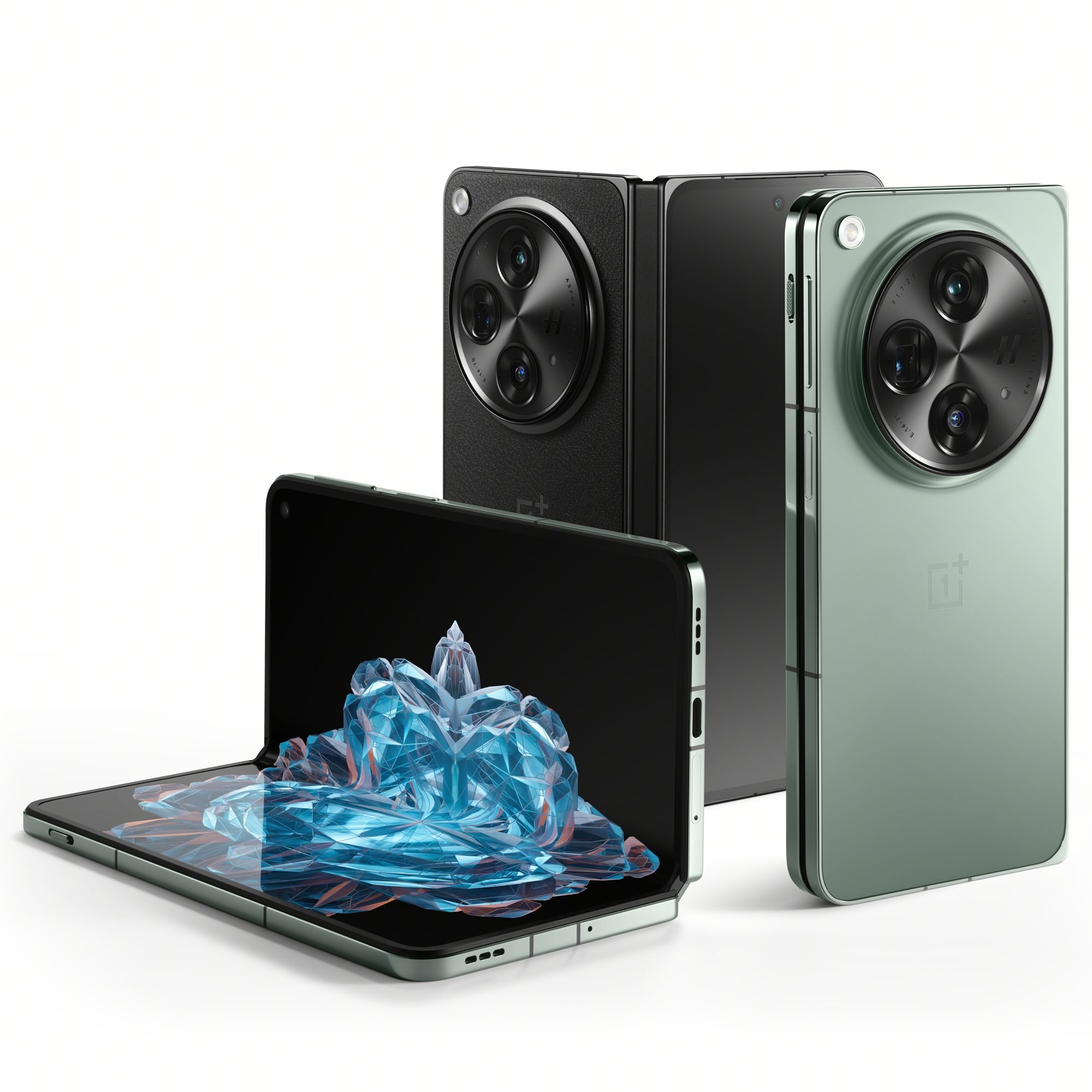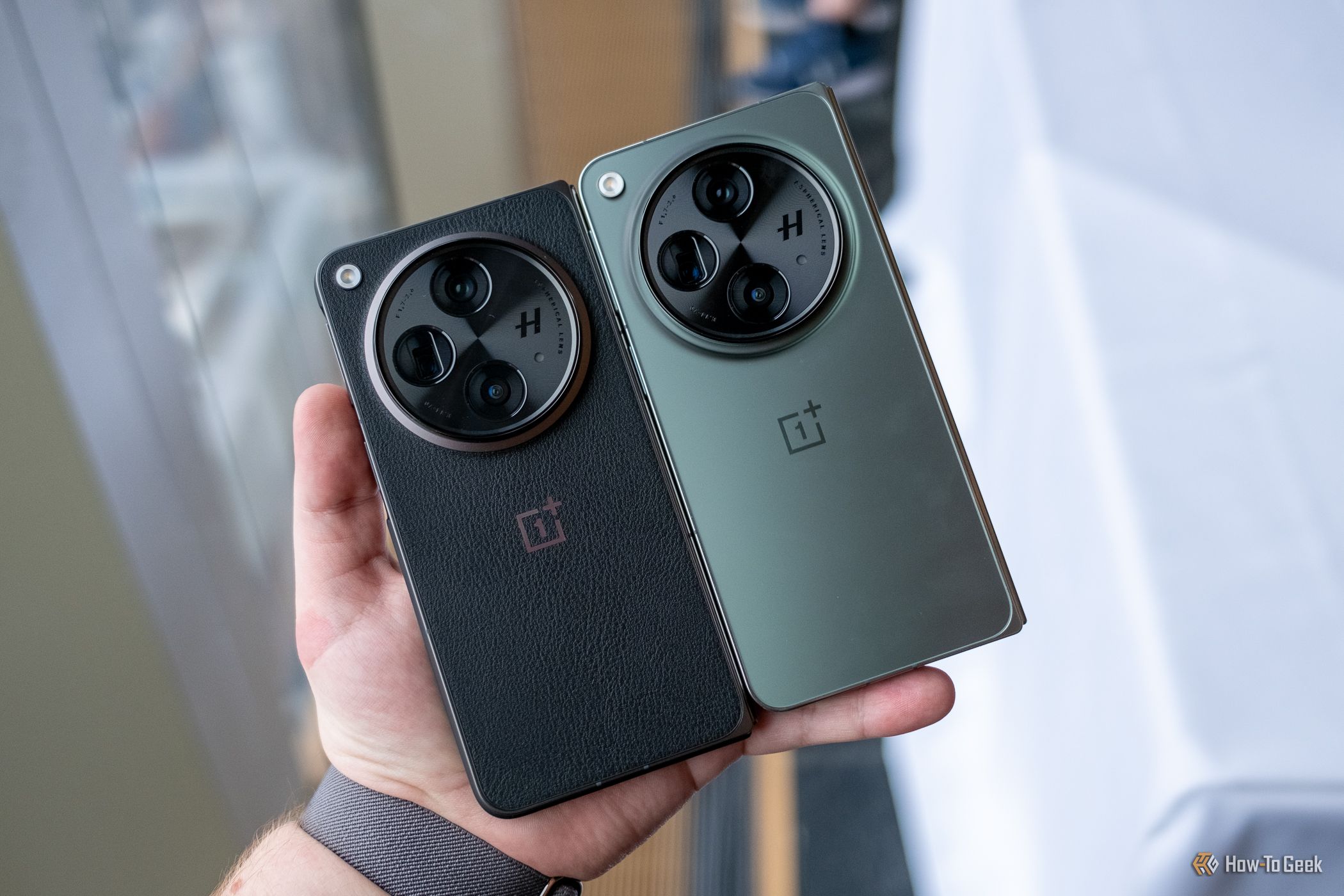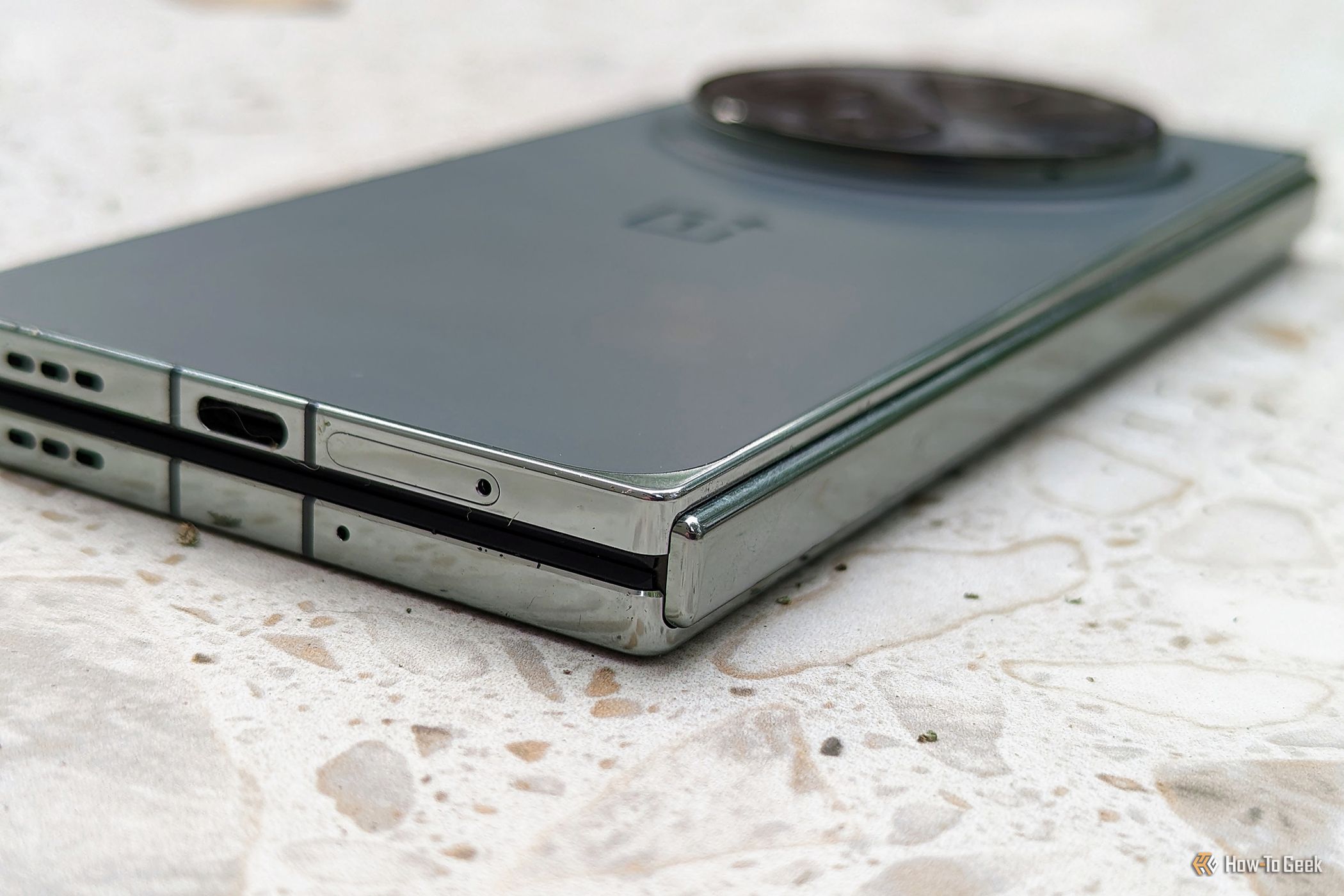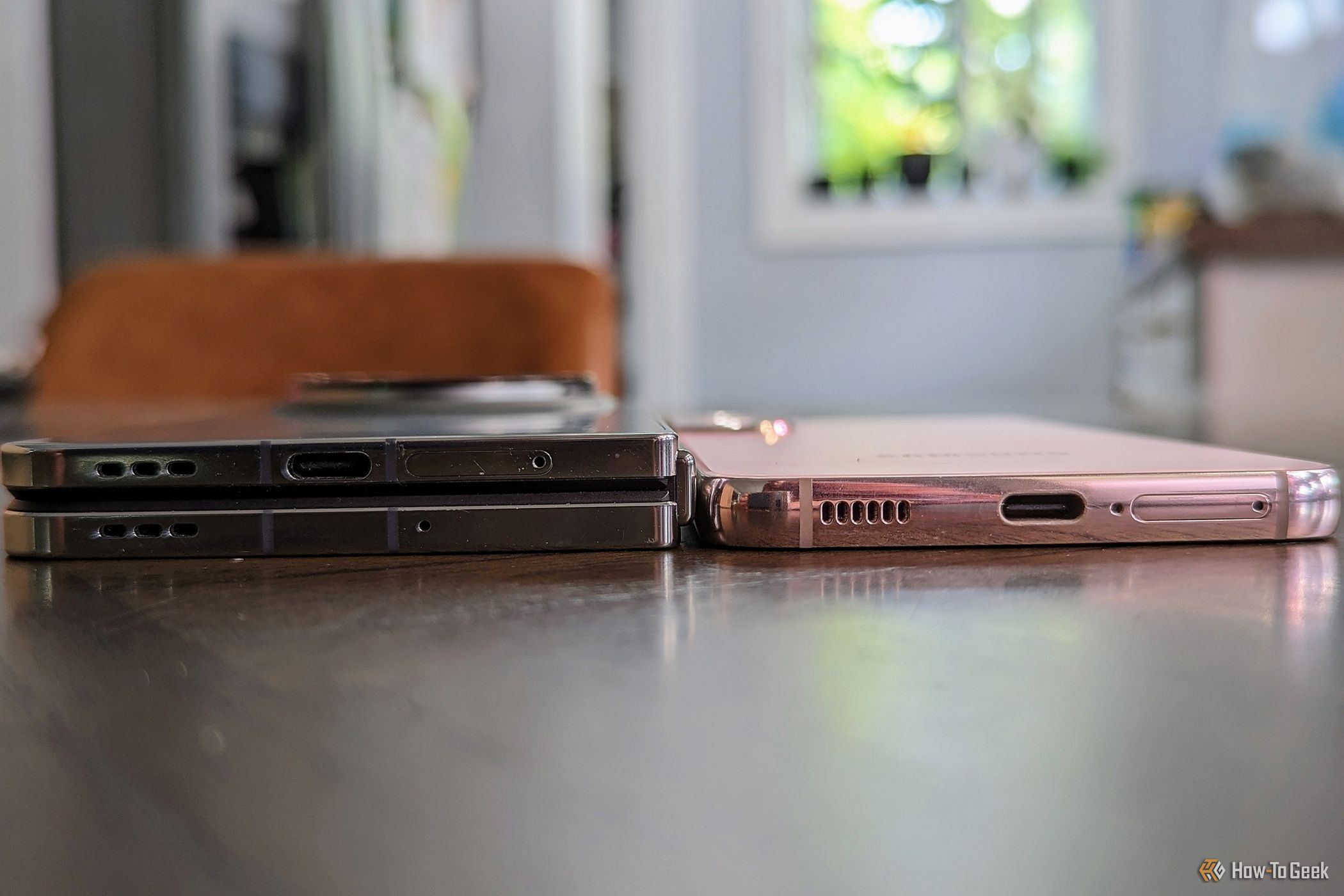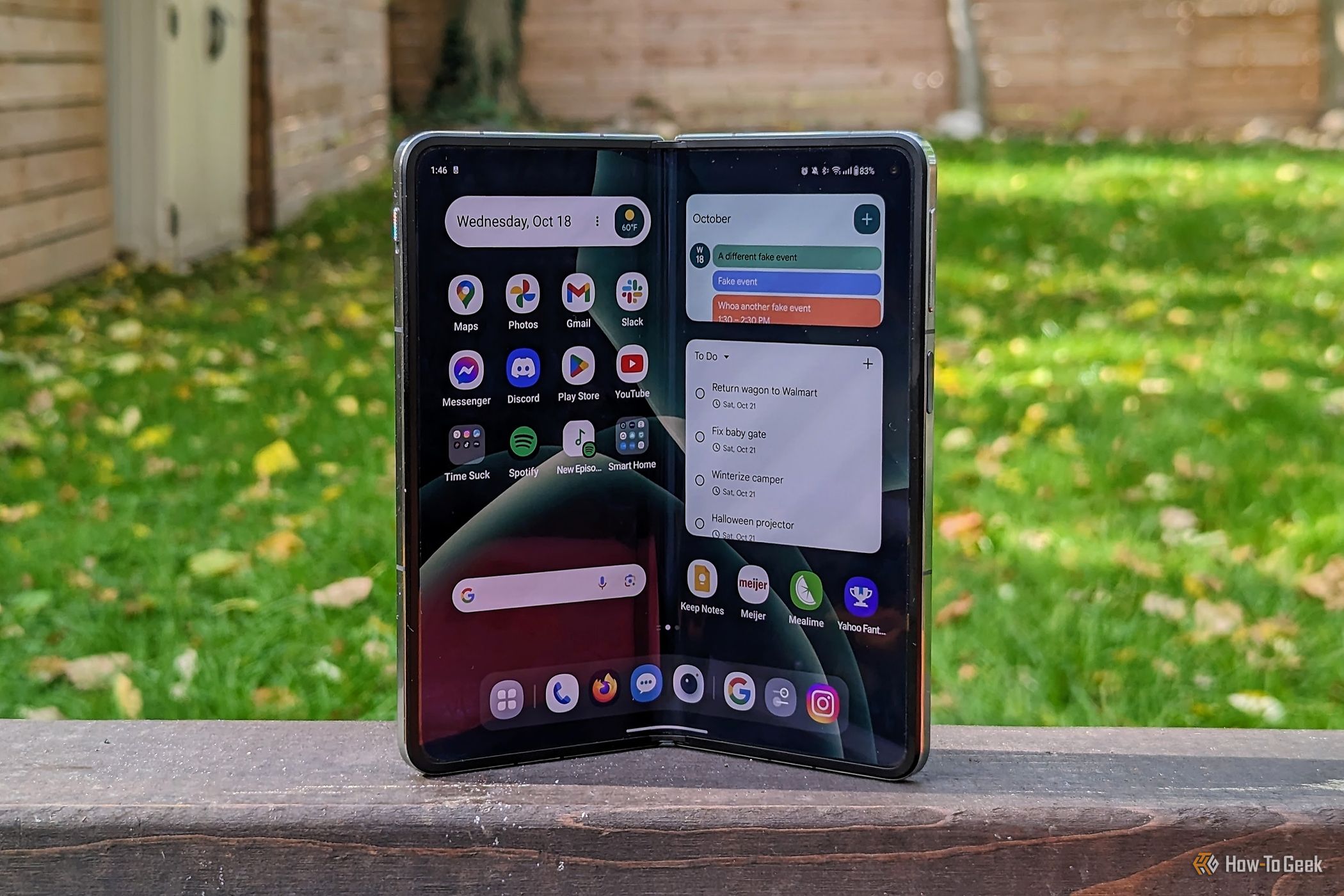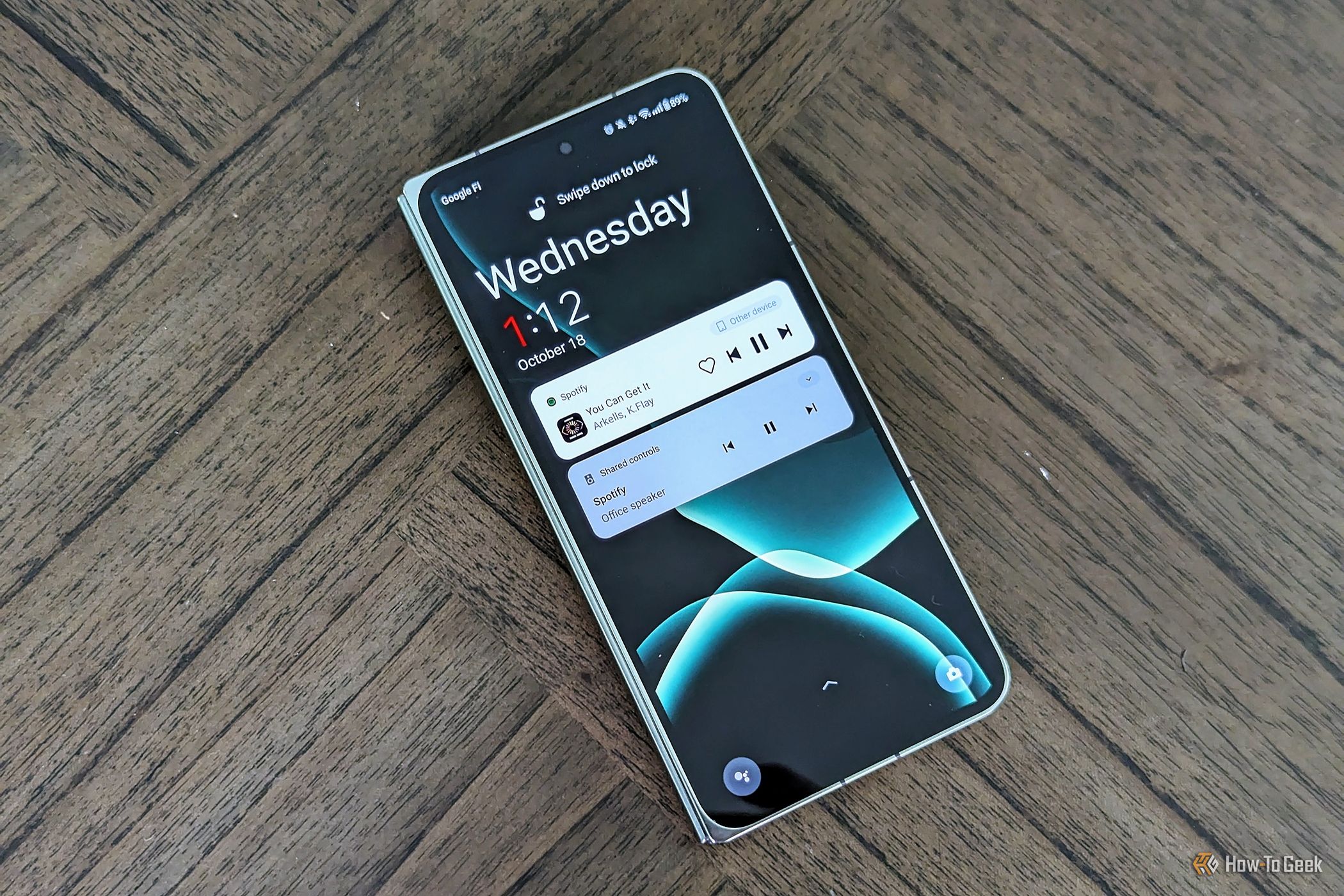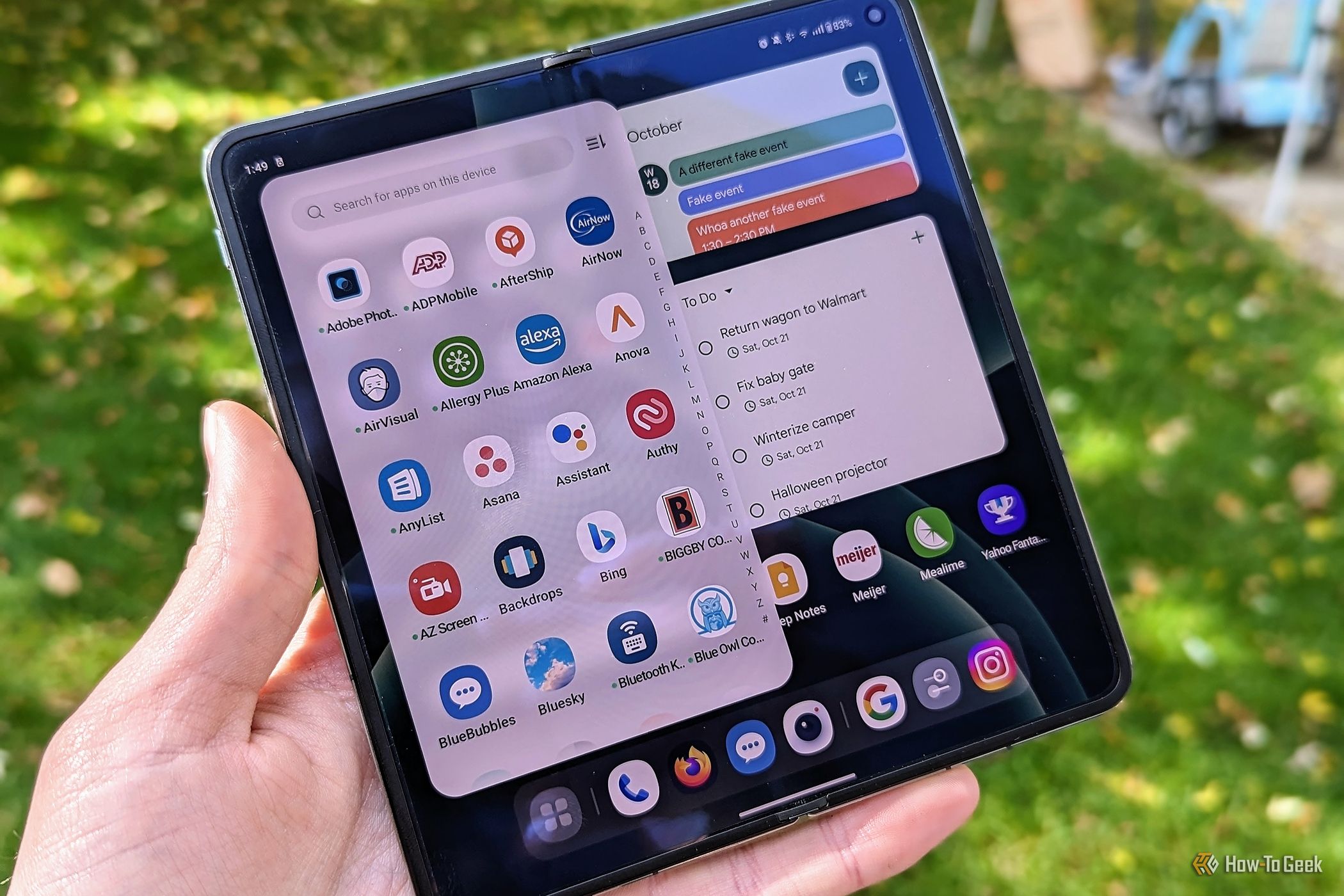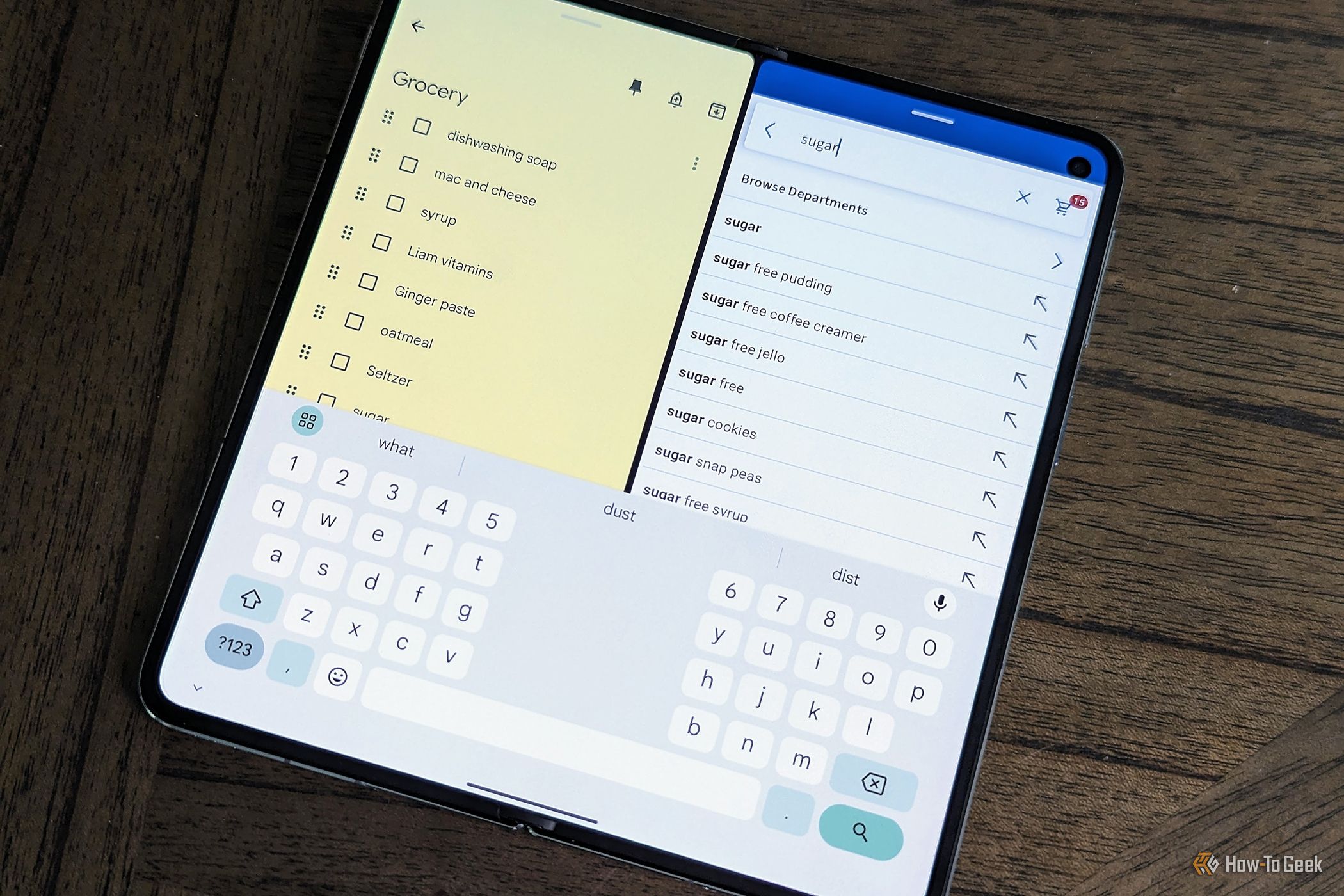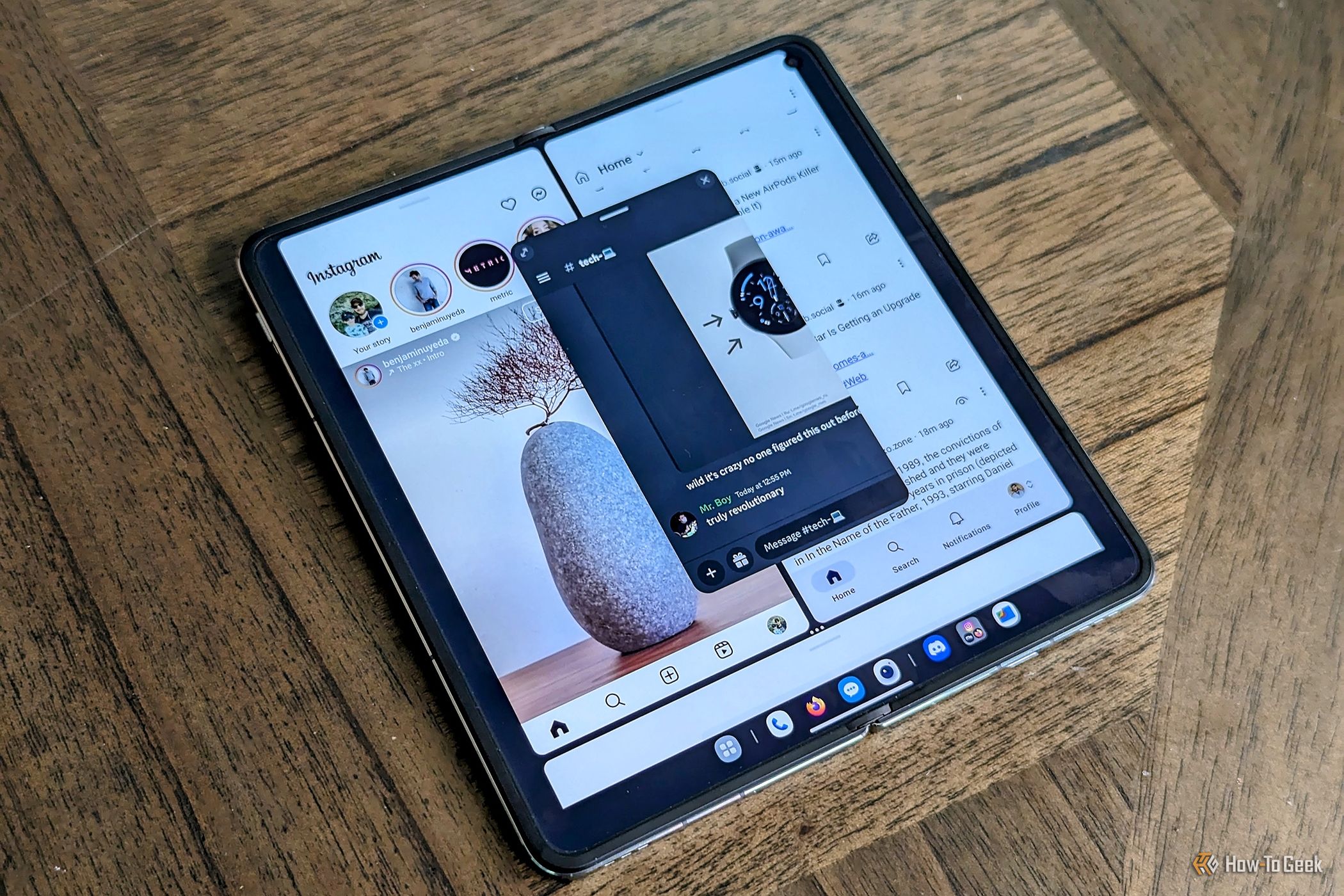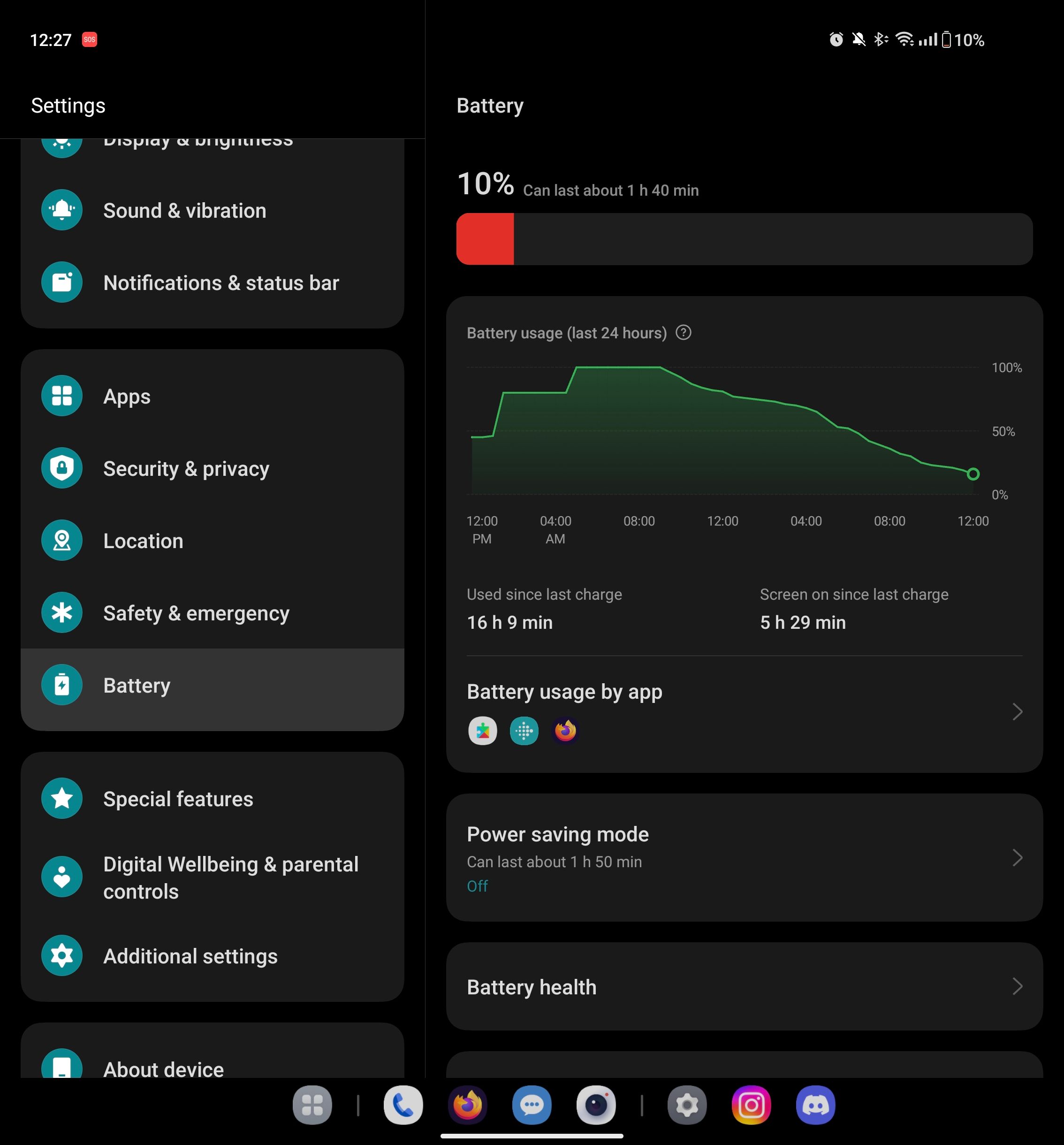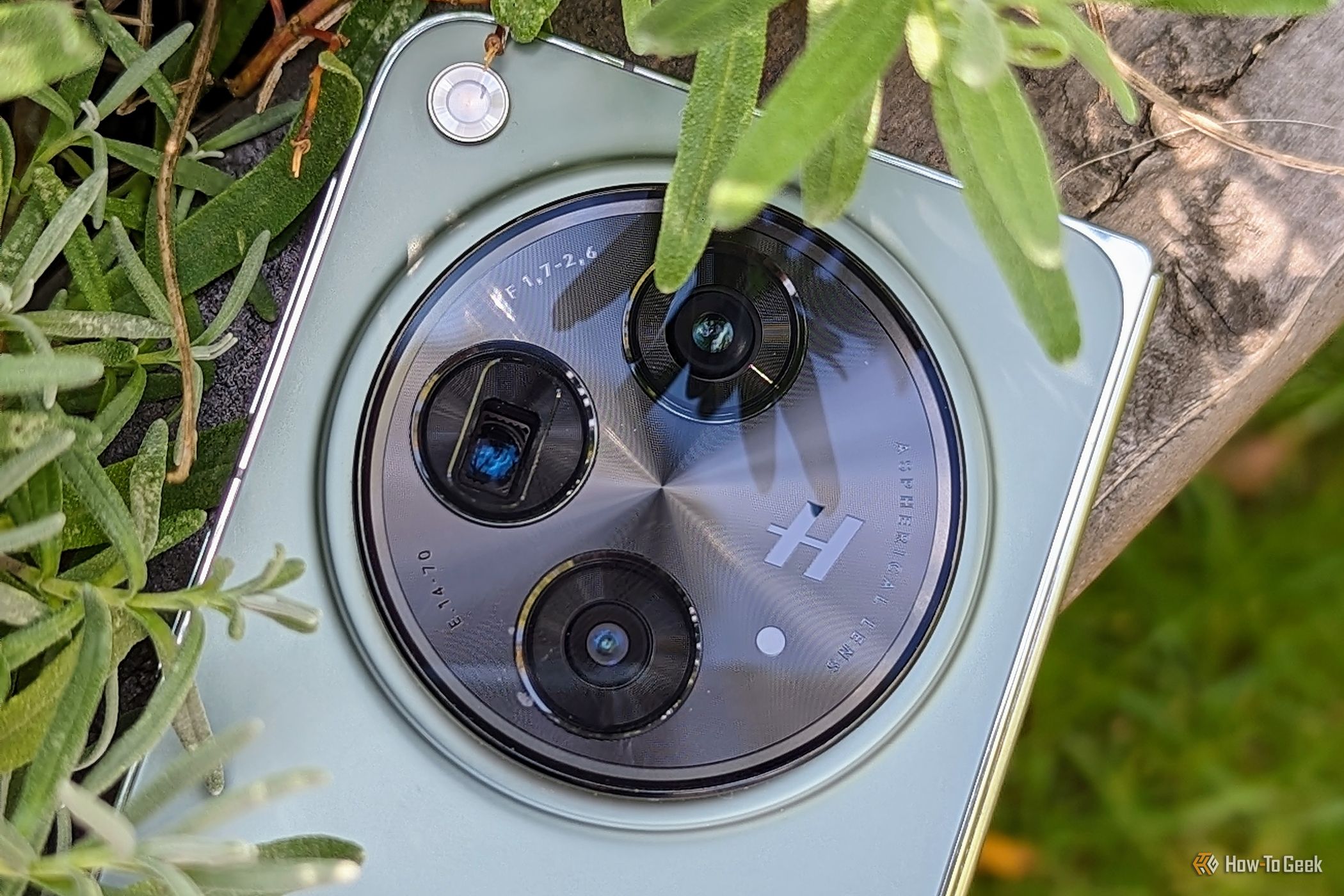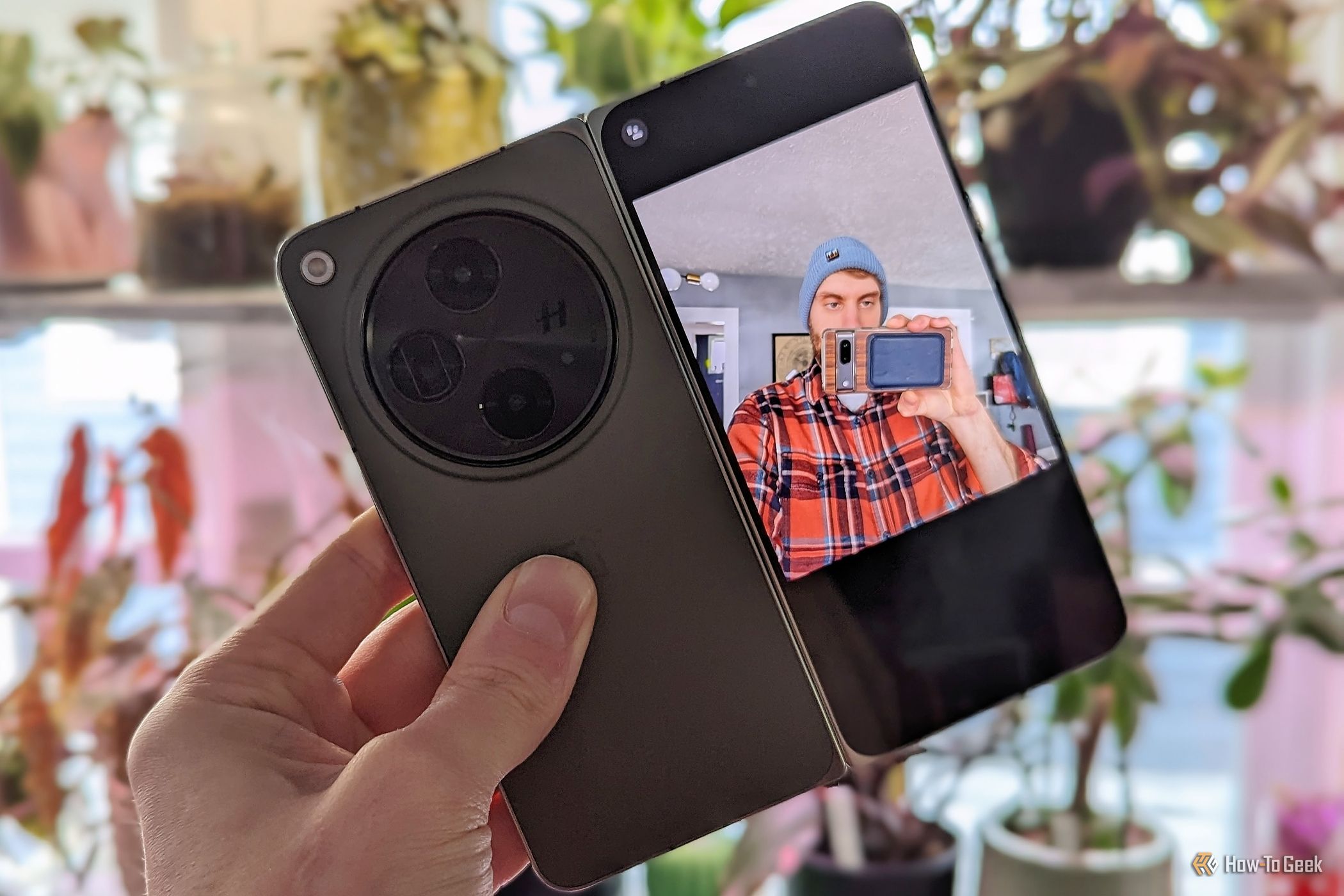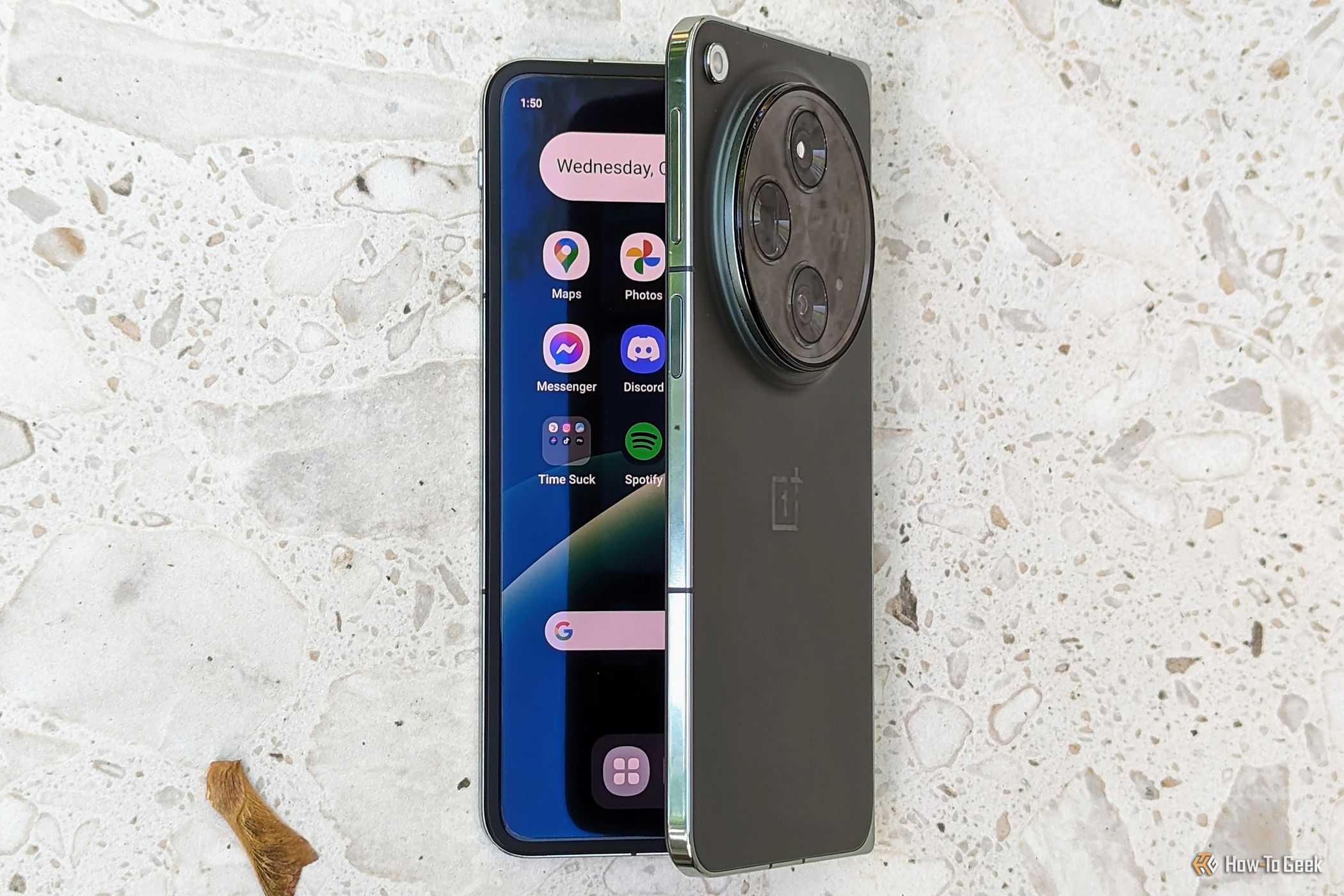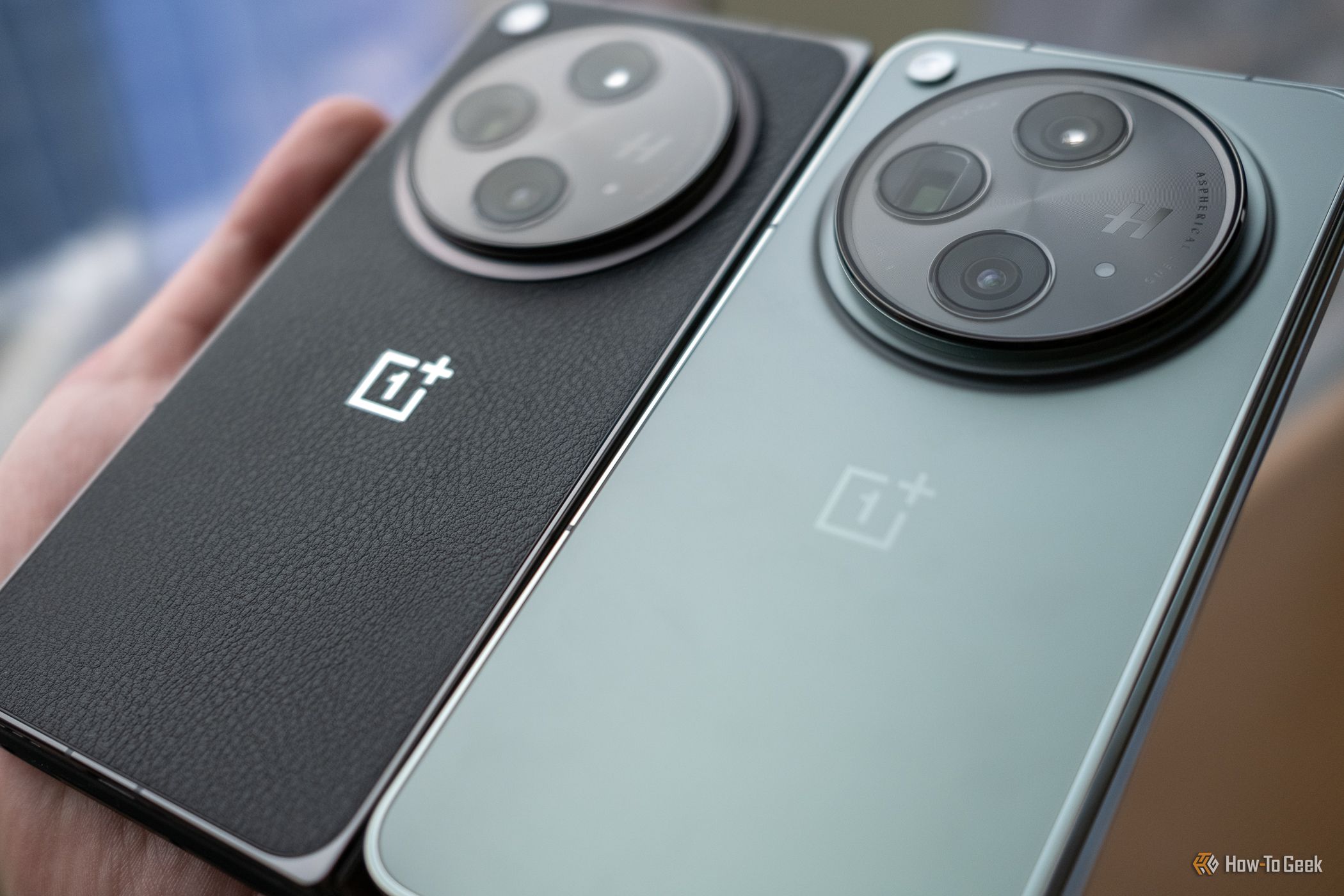
Unveiling the OnePlus Open: A Revolution in Smartphone Innovation

OnePlus boldly enters the foldable phone market with the OnePlus Open, offering a stunning design, flat displays, practical software enhancements, impressive performance, good camera quality, and an enticing overall package
Key Takeaways
the OnePlus Open, a phone-sized display on the outside and a larger screen inside, has the potential to disrupt the foldable phone market by offering a unique tablet-like foldable phone experience.
The device is lightweight and compact, offering a delightful tactile experience when opening and closing. It delivers remarkable performance and impressive battery life, accompanied by a stellar camera quality.
Nevertheless, the OnePlus Open exhibits an absurdly oversized camera bump and lacks wireless charging and a higher IP rating. Additionally, a few software bugs are noticeable, although OxygenOS incorporates handy features specifically designed for a foldable device.
OnePlus has built a reputation for producing feature-rich smartphones at an affordable price. However, the company has been exploring new ventures, including the development of the OnePlus Pad and OnePlus Watch. In the latest move, OnePlus is making its entry into the foldable phone market with the OnePlus Open, marking a significant debut.
The OnePlus Open is a tablet-like foldable device, commonly referred to as a "book-style" foldable. This design entails a horizontal opening mechanism, featuring a phone-sized display on the exterior and a larger screen on the inside. Unlike the vertical flip-style foldables, the market for this particular foldable category is not as saturated. Currently, the main competitors in the US market are the Samsung Galaxy Z Fold series and the recently introduced Pixel Fold. As such, there is substantial untapped potential for OnePlus to establish a foothold in this market segment.
I have been using the OnePlus Open as my primary device for the past two weeks, and there is plenty to share about this groundbreaking foldable phone, particularly since it represents the inaugural entry into this market segment from the company.
OnePlus OpenThe OnePlus Open is a foldable phone that resembles a tablet. It has a smaller display on the outside and a nearly square display on the inside. The back of the phone features a large camera setup.
Here are the specifications of the OnePlus Open:
- Processor: Qualcomm Snapdragon 8 Gen 2
- RAM: 16GB
- Storage: 512GB UFS 4.0
- Battery: 4,805 mAh
- Ports: USB Type-C 3.1
- Operating System: Android 13 (OxygenOS 13.2)
- Front Camera: 20 MP f/2.2 91-degree FOV 0.7 µm pixels, 32 MP f/2.4 88.5-degree FOV 0.7 µm pixels
- Rear Camera: 48 MP f/1.7 85-degree FOV 1.12 µm pixels, 64 MP telephoto 3X optical zoom f/2.6 33.4-degree FOV 0.7 µm pixels, 48 MP f/2.2 114-degree FOV 0.8 µm pixels
- Dimensions (folded): 153.4 mm x 73.3 mm x 11.7 mm (Emerald), 11.9 mm (Black)
- Dimensions (unfolded): 153.4 mm x 143.1 mm x 5.8 mm (Emerald), 5.9 mm (Black)
- Colors: Voyager Black, Emerald Dusk
- Weight: 239 g (Black), 245 g (Emerald)
- IP Rating: IPX4
- Security: Side-mounted Fingerprint Sensor
- Cover Display: 6.3-inch Super Fluid AMOLED with LTPO 3.0, 2484 x 1116, 431 ppi, 1400 / 2800 nits, 10-120 Hz dynamic
- Interior Display: 7.82-inch, Flexi-fluid AMOLED with LTPO 3.0, 2440 x 2268, 426 ppi, 1400 / 2800 nits, 1-120 Hz dynamic
- Pros: Lightweight, reasonable size feels great opened or closed
Excellent performance and battery life
OxygenOS includes useful features for a foldable
Camera quality is super solid
Cons Camera bump is comically large
A few bugs in the software
No wireless charging and only IPX4 are a bummer
See at OnePlus
OnePlus Open Design: Size Matters
Justin DuinoAlthough the OnePlus Open is a distinct device, its design seamlessly blends with the company's existing collection of non-foldable phones. Undoubtedly, the folding mechanism steals the spotlight, but the attention-grabbing circular camera module on the rear cannot be overlooked either. Before delving into the details of that camera bump, let's first discuss the intriguing build materials chosen by OnePlus.
Durability holds significant importance in the realm of foldable devices. To address this concern, numerous foldable phones opt for stainless steel bodies. However, stainless steel adds extra weight, which prompted OnePlus to take substantial measures to reduce the weight of the Open model. While hinges manufactured by Oppo (OnePlus' parent company) and other companies consist of approximately 100 or more components, OnePlus managed to streamline this number to an impressive 69. The hinge components are crafted from lightweight alloys, while the flexible display is upheld by carbon fiber. For an intriguing behind-the-scenes look at the construction process of the OnePlus Open, be sure to watch Michael Fisher’s video.
Joe FedewaThe engineering behind the device has resulted in a weight of (239g/245g), putting it on par with traditional non-folding phones. This weight hasn't compromised its durability or feel, as I've dropped the OnePlus Open from great heights and even into water, and it came out unscathed. However, it is important to note that its water resistance is only rated IPX4, which is lower than the IPX8 rating of the Galaxy Z Fold 5 and Pixel Fold.
Previously, my experience with foldable phones was limited to vertical ones, which can fold into a compact size but tend to be thick when folded. In contrast, the OnePlus Open is impressively thin at just 11.7mm when folded. For comparison, the Galaxy Z Flip 5 measures 15.1mm in thickness when folded, while the Pixel Fold is 12.1mm. However, there is a significant caveat to the Open's slimness, both literally and figuratively.
Joe Fedewa compares the camera bump on the OnePlus Open and the Samsung Galaxy S22. Unlike OnePlus, Samsung takes the camera bump into consideration and this adds an extra 5mm to the thickness. However, the camera bump does not make the phone feel excessively thick. In fact, when folded in hand or placed in pockets, it feels just like a normal phone. This is precisely why camera bumps exist.However, the camera module on the OnePlus Open is one aspect that I found unfavorable. It occupies a significant amount of space on the back of the phone. To hold the Open comfortably, I had to either adjust my fingers to the bottom two-thirds of the device or unintentionally leave fingerprints on the camera lenses. Nevertheless, the most irritating aspect of the camera bump is its instability when placed on flat surfaces. While it is well-positioned when in phone mode, it becomes extremely wobbly in tablet mode.
Functionally, the hinge of the OnePlus Open demonstrated durability and sturdiness. Similar to other foldable phones, it does not fully flatten when unfolded, although this was not immediately noticeable unless specifically examined. The hinge possesses sufficient strength to keep the display open at a maximum angle of approximately 135 degrees in "laptop mode," which is satisfactory for video calls.
All in all, the design and construction of the OnePlus Open left me highly impressed. Prior to using a foldable device like this one, I had concerns about it being too bulky and heavy to carry in my pocket. However, this was not the case with the OnePlus Open at all. Even when primarily using the phone with the rear portion of the provided case, it did not feel excessively bulky. (The case itself consists of two separate parts.) How well the OnePlus Open will fare in the long run, considering the materials chosen by OnePlus, remains to be seen. Nonetheless, I remain optimistic.
OnePlus Open Displays: Beautiful and Surprisingly Flat
Joe FedewaThe OnePlus Open features a 6.3-inch external display with a resolution of 2484 x 1116 and an aspect ratio of 20:9. The internal display measures 7.8 inches, with a resolution of 2440 x 2268 and an aspect ratio close to 1:1. Both displays offer a refresh rate of up to 120Hz and a peak brightness of 2800 nits.
When it comes to aspect ratios on foldable phones, there are two perspectives. The Galaxy Z Fold 5 has a slim and tall external display, accompanied by an internal display that is taller than it is wide. On the other hand, the Pixel Fold's external display resembles a traditional 16:9 phone, while its internal display is almost square, with a ratio of 6:5. The OnePlus Open has opted for the latter approach.
Joe FedewaBoth displays on the OnePlus Open impressed me with their aspect ratios. When the device is closed, the external screen resembled a typical smartphone, and surprisingly, it was even more user-friendly than most regular phones. The Open boasts a shorter and wider form factor compared to my everyday device, the Pixel 7, when it is folded shut. As smartphones evolved to encompass top and bottom bezels, the industry veered away from the 16:9 screen ratio, and this made me realize how much I had yearned for it.
The technical aspect ratio of the flexible display inside is approximately 1:1, which I find more practical for a foldable device compared to Samsung's taller design. The inside display gives the feel of a tablet rather than just a wide phone. If I'm carrying a foldable device, I prefer it to function as a phone on the outer side and a tablet on the inner side.
When discussing foldable displays, it's impossible not to mention the crease. People often claim that the crease becomes less noticeable over time. While that may hold true, the OnePlus Open takes it a step further with an incredibly minimal crease. Even when intentionally searching for it, it's barely perceptible.
As for the tactile experience, the inside display is clearly not made of glass. However, it doesn't feel overly soft or mushy either. It does tend to attract smudges and fingerprints more quickly compared to the outside display. Despite this, both displays excel in appearance. The specifications for both the inside and outside displays are quite similar, enabling smooth transitions between them. Additionally, unlike the OnePlus Nord N30, both displays remain visible in any direction even when wearing sunglasses.
OnePlus Open Software: Practical Additions
Joe FedewaAs of October 2023, the OnePlus Open currently operates on OxygenOS 13.2, which is based on Android 13. Software plays a crucial role in the functionality of foldable devices, and the OnePlus Open is the company's initial foray into this innovative form factor. Overall, my experience with the software has been satisfactory, although there have been a few peculiarities.
Regarding the software displayed on the external screen, there isn't much to discuss. It offers the familiar OxygenOS experience found on regular OnePlus phones. I generally appreciate the direction OnePlus is taking with their software; however, it's evident that they draw inspiration from other companies. One aspect that caught my attention was the resemblance to the iPhone's App Library in terms of large home screen folders that allow for launching apps without fully opening the folder. On the other hand, I have never found the "Shelf" feature particularly useful. It serves as a secondary screen exclusively dedicated to widgets, even though I can easily incorporate everything I need onto the home screen.
Joe FedewaOnePlus's tablet, released earlier this year, has influenced the optimization of the OnePlus Open. In tablet mode, the dock can accommodate up to four icons, while expanding to display an additional three recent app icons and a shortcut for opening a floating app drawer. This feature enhances the simplicity of the dock in phone mode while offering increased functionality on the larger screen.
The default system launcher on the OnePlus device worked exceptionally well for me. In tablet mode, two home screen pages are displayed side-by-side. Although it's not a complete tablet layout, as widgets cannot extend across the middle of the screen. On the first page, I organized my essential apps for convenient access from the outer display, while the second page was reserved for widgets and additional features.
While it is possible to use a third-party launcher on the OnePlus Open, there are two significant drawbacks. Firstly, the bottom taskbar is only available when using the system launcher while running applications. This restriction is common among Android foldables currently. However, what sets this apart is a noticeable bug that prevents the use of split-screen mode when utilizing a third-party launcher.
When I attempted to select the second app, the operating system would malfunction if I picked the first app for splitting. Interestingly, this issue only occurred while utilizing split-screen mode on the internal display. However, regardless of the launcher used, there were no problems when utilizing split-screen mode on the external display. Although OnePlus released an update on October 16th, the bug remained unaddressed.
The split-screen feature was quite impressive when it functioned properly. It allowed for up to four apps to be open simultaneously on the screen - three in the split-screen interface and one floating on top. OxygenOS has a unique approach to the traditional side-by-side display of two apps. In addition to the even 50/50 split, you can expand one app to have a 70/30 layout. The smaller app is slightly pushed back to create more space, and it slides back when tapped. This implementation is quite clever.
I was pleasantly surprised by the seamless adaptation of numerous apps to the dual displays. Traditionally, Android apps have faced criticism for their subpar performance on tablets, but the tides seem to be turning. Even Instagram, notorious for its lack of support for the iPad, effortlessly adjusts its layout when in tablet mode on the OnePlus Open. It's undeniably exhilarating to utilize an app in standard portrait mode on the external screen and then witness it magnified on the expansive display upon unfolding the phone.
On the whole, OxygenOS on a foldable device left a strong impression. There are certain features that I genuinely believe I would yearn for if I were to switch to a Pixel Fold or Galaxy Z Fold. Although the OS isn't flawless, any issues can easily be rectified through updates. Additionally, I would appreciate it if OnePlus ceased imposing a red lock screen clock on all users.
OnePlus Open Performance & Battery Life: Awesome
Joe FedewaThe OnePlus Open comes equipped with the latest flagship Snapdragon 8 Gen 2 processor from Qualcomm and a substantial 16GB of RAM. Rest assured, performance is not a concern when it comes to this device, which is specifically designed to handle multiple tasks effortlessly.
It's hard to exaggerate the incredible ability of this form factor when it comes to multitasking. And I'm not just referring to mundane productivity tasks. One evening, I experienced the joy of playing Jackbox during a voice call on Discord while simultaneously texting a friend. I had all three apps—Discord, Firefox, and Messages—open on the inside screen in split-screen mode, and there wasn't a single hiccup or stutter in sight. While this may be an extreme example, it highlights the boundless possibilities of the OnePlus Open.
The battery life was equally impressive. On heavy usage days, the 4,805mAh battery effortlessly provided me with close to six hours of screen-on time. I never found myself having to use the larger inside screen sparingly in order to make it through the day.
The OnePlus Open comes with the company's lightning-fast "SUPERVOOC" wired charging, which can charge the battery from 1-100% in just 40 minutes. While this feature is impressive, I personally prefer wireless charging. The battery life is so good that I rarely find the need for a super fast recharge at inconvenient times.
When it comes to performance and battery life, the OnePlus Open excels. It is a powerful device with a long-lasting battery, making it a successful tablet-like foldable.
OnePlus Open Camera Quality: Pretty Good For OnePlus
Joe FedewaOnePlus has always excelled in various aspects, but their camera performance has never truly been outstanding. This remains the case with the OnePlus Open, although it comes very close to achieving greatness.
The primary camera, located within the noticeable bump, boasts an impressive 48MP lens with an f/1.7 aperture. Additionally, it is accompanied by a 64MP telephoto camera offering 3x optical zoom and an f/2.6 aperture, as well as a 48MP wide-angle camera with a 114-degree field-of-view and an f/2.2 aperture. Overall, I was mostly satisfied with the quality of photos and videos captured using this camera. However, it did have one frustrating issue.
Many of the pictures I captured appeared blurry whenever there was even the slightest movement. Upon examining the metadata, I noticed that the exposure time would significantly decrease in dimly lit conditions. As a result, capturing clear photos of my son and dog in motion indoors became quite challenging.
In terms of the cameras, I encountered an issue related to apparent post-processing. When compared to my Pixel 7, which I believe has one of the best smartphone cameras, the photos taken with the OnePlus Open appeared much brighter and more saturated. However, this was only noticeable when examining the photos side-by-side. Individually, the photos looked fine, but it was evident that the colors were not the most accurate representation of reality.
Despite starting with some negative points, it is important to note that there were not many drawbacks. Overall, the camera experience was quite impressive. According to OnePlus, the new Sony LYT-T808 sensor is comparable to the 1-inch Sony IMX989 or even the Samsung Galaxy S23 Ultra. I have to agree that the results are reminiscent of a high-end Samsung Galaxy device.
I've discovered that I rely on telephoto cameras almost as much as the primary cameras on smartphones, and the 3x optical zoom on the OnePlus Open performed exceptionally well. It would be preferable, however, if OnePlus didn't include so many zoom increments in the camera app—I never had any intention of utilizing the artificial 2X or 6X digital zoom, and this encompasses the trendy "120X Ultra Red Zoom."
Joe FedewaThe ability to view the viewfinder on the external display while using the rear cameras is a convenient feature. However, it is clear that OnePlus did not intend for this feature to be utilized for selfies, as there are no controls available on the external display. It would have been a nice addition to have the ability to take selfies with ease instead of having to uncomfortably reach for the volume buttons and risk accidentally touching the larger display.
In general, I believe that this camera setup is possibly one of, if not the best, that OnePlus has ever released. Nonetheless, it seems that no matter which phone I review, I consistently find myself favoring the photos taken by a Pixel phone. This is just my personal opinion, take it for whatever value it holds.
Should You Buy the OnePlus Open?
Joe FedewaThe OnePlus Open, being my first experience with a tablet-like foldable, had me initially doubtful about its practicality. Did I truly need a tablet readily available with me all the time? The vertically foldable phones appeared more sensible. However, I am now a firm believer.
The true brilliance of the OnePlus Open lies in its size, which was my initial concern with this type of foldable device. Most of the time, I wouldn't unfold the entire display while using it outdoors. Hence, if the device was excessively heavy, it would feel burdensome to carry without any real need. The fact that it is lightweight and slender, comparable to a standard smartphone, with the added bonus of an inside display, is truly commendable.
Justin DuinoWhile the OnePlus Open is not the sole contender in the market for this concept, it does stand out with its price. Priced at $1,699, it is $100 more affordable compared to the Pixel Fold and Galaxy Z Fold 5. Spending an additional $100 grants you the convenience of wireless charging and an IPX8 rating. Although $1,699 is still a considerable amount, it is not uncommon to spend a similar sum on purchasing a phone and a tablet separately. The realization of this convenience only truly struck me when I had the OnePlus Open in my hands. Consequently, my iPad has been left neglected, gathering dust, ever since I started using the OnePlus Open.
I must admit, I didn't anticipate enjoying the OnePlus Open to this extent. As the company's inaugural foldable phone, it has undoubtedly exceeded expectations. With OnePlus joining the foldables market, my anticipation for the future of these devices has grown exponentially. I am now fully aware of the potential that lies ahead.
OnePlus OpenThe OnePlus Open is a foldable phone with a tablet-like design. It has a phone-sized outside display and a nearly square inside display, as well as a large camera array on the back.
Specifications:
- SoC: Qualcomm Snapdragon 8 Gen 2
- RAM: 16GB
- Storage: 512GB UFS 4.0
- Battery: 4,805 mAh
- Ports: USB Type-C 3.1
- Operating System: Android 13 (OxygenOS 13.2)
- Front camera: 20 MP f/2.2 91-degree FOV 0.7 µm pixels, 32 MP f/2.4 88.5-degree FOV 0.7 µm pixels
- Rear camera: 48 MP f/1.7 85-degree FOV 1.12 µm pixels, 64 MP telephoto 3X optical zoom f/2.6 33.4-degree FOV 0.7 µm pixels, 48 MP f/2.2 114-degree FOV 0.8 µm pixels
- Dimensions: 153.4 mm x 73.3 mm x 11.7 mm (Emerald) 11.9 mm (Black) folded, 153.4 mm x 143.1 mm x 5.8 mm (Emerald) 5.9 mm (Black) unfolded
- Colors: Voyager Black, Emerald Dusk
- Weight: 239 g (Black), 245 g (Emerald)
- IP Rating: IPX4
- Security: Side-mounted Fingerprint Sensor
- Cover display: 6.3-inch Super Fluid AMOLED with LTPO 3.0, 2484 x 1116, 431 ppi, 1400 / 2800 nits, 10-120 Hz dynamic
- Interior display: 7.82-inch, Flexi-fluid AMOLED with LTPO 3.0, 2440 x 2268, 426 ppi, 1400 / 2800 nits, 1-120 Hz dynamic
- Available at OnePlus.
